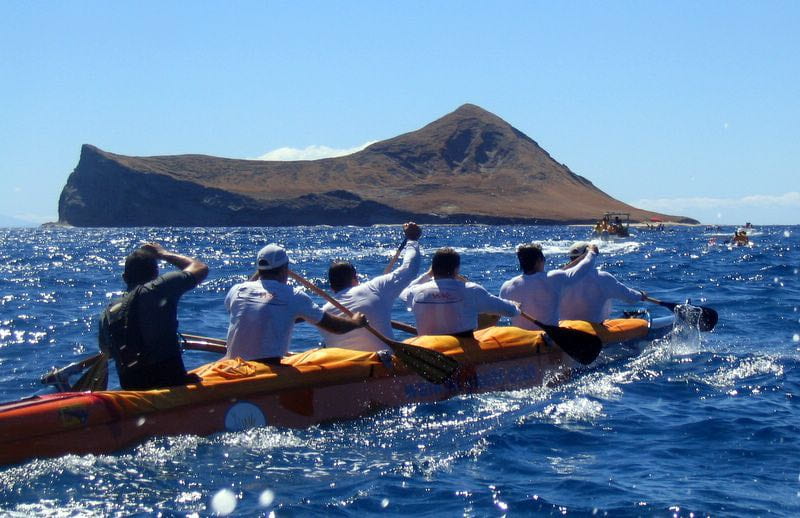
“A female Polynesian teacher swept up in white water using her desk to navigate through looking confident” prompt, Mid-Journey, Discord Server 13 Aug. 2023,
The term “Permanent White Water” comes from Peter Vail’s “Learning as a Way of Being (1996) and has always been a powerful metaphor for ongoing change, and never more true than at this moment.
Navigating The White Water with Deeper Learning
Much like the waters of the Hawaiian Islands, deeper learning comprises moments of turbulence, tidal pulls, following seas, and sweet rides on waves – if you can catch them! It’s about reading the water, grappling with real-world challenges, and emerging with an enduring understanding. In our journey at Kupu Hou Academy, we’ve always emphasized the importance of being present, of truly immersing oneself in the learning experience, whether it’s understanding the complex interdependence of our local water systems or the intricacies of a mathematical concept. At its core, deeper learning, as described by Mehta and Fine in the book “In Search of Deeper Learning” revolves around the pillars of “Identity, Mastery, and Creativity.” It’s not just about acquiring knowledge; it’s about forging a strong sense of self, mastering complex skills, and channeling that mastery into creative endeavors. It is this kind of learning that makes knowledge powerful, transferable and engaging.
AI: The New Current
Enter AI. This technological marvel promises to revolutionize education and be disruptive to entrenched systems and past methodologies and beliefs about teaching and learning. As champions of student-centered learning, how does it fit into our deeper learning framework? Can it enhance the richness of our learning experiences, or will it merely streamline them, potentially robbing us of the ‘grappling’ essential to true understanding?
Imagine a classroom where AI-driven platforms adapt to each student’s learning style, providing real-time feedback and challenges tailored to their current understanding. It’s not about making the journey smooth; it’s about ensuring it is meaningful and aligned with the learner’s “just right” feedback and support.
The Confluence of Culture and Technology
Drawing from our experiences, like the insights gained from indigenous perspectives managing and appreciating water, it’s essential to approach AI with a balanced view. Technology, when integrated with cultural and local contexts, can provide a richer, more holistic learning experience. The stories, the narratives, the connections – they all matter. And AI when used as an adaptive tool can help weave these threads together, creating a tapestry of learning that’s both deep and wide.
Charting the Course Ahead
As we navigate these turbulent waters, it’s crucial to have a clear sense of where we are going. Much like the attached picture (that’s Mark steering a crew off Manana Island near Sandy Beach on Oahu) we need to read the waters we are in AND have a commitment to the ultimate destination we are heading to. Just as we have supported hundred of teachers over the past years in developing meaningful projects and inquiries for their learners, integrating AI into education requires clear goals (Got a good Essential Question?), purposeful learning, assessment criteria, and continuous feedback. We need to ensure that our students not only reach their destination but also cherish the journey.
The fusion of AI with deeper learning presents both challenges and opportunities. As educators, it’s our responsibility to ensure that we harness the potential of AI while staying true to the principles of deeper learning. The journey promises to be exciting, and I invite all educators, students, and tech enthusiasts to join us as we chart this new course.
**This draft was supported by conversations with ChatGPT on August 13, 2023
Reference:
Vaill, Peter B. Learning as a Way of Being: Strategies for Survival in a World of Permanent White Water, San Francisco: Jossey-Bass, 1996.
Mehta, Jal, and Sarah Fine. In Search of Deeper Learning: The Quest to Remake the American High School. Cambridge, MA: Harvard University Press, 2016.

